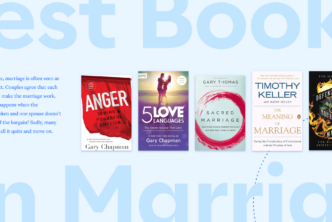Christopher Kou holds a certificate in biblical, liturgical, and cultural studies from Theopolis Institute. He has been published in the Journal of the Evangelical Theological Society. He is currently enrolled in the MABS program at Reformed Theological Seminary and holds a bachelor’s in history and theology from Elmhurst University.
Christopher lives in the northwest suburbs of Chicago with his wife Ellyn and their two children, Stephen and Eliana. He is a member of Christ Covenant Church of Chicago (CREC).
1. Five Books of St. Irenaeus against Heresies, by Irenaeus
This second-century work is a landmark of early Christian theology. Although oriented polemically against the Gnostic heresies of Irenaeus’s day, the work is an indispensable work of theology proper, demonstrating a high Christology and still-fresh insights into creation and anthropology that remain useful today.
2. Summa Theologica, by Thomas Aquinas
No library is complete without the Summa, which is one of the great classics of Christian scholarship. Agree or disagree with Aquinas on any point, but you cannot afford to ignore him. His thought is careful and granular, and therefore thought provoking, and it pervades all of Western Christian theology and philosophy.

3. Through New Eyes, by James Jordan
This book is a foundational and paradigm-shifting work on biblical worldview. That is, a view of the world through biblical eyes. James Jordan takes us on a fresh, and often surprising, tour of biblical symbolism rooted in God’s creational order, and shows the various ways it informs our reading of Scripture as a whole. In this book, there is a whole lot of “once seen, cannot unsee.”
4. Reformed Dogmatics, by Herman Bavinck
This classic work of systematic theology is biblically rich and historically sensitive. I consider Bavinck’s work as the touchstone for both deep and expansive theological thought. It is work that I reference constantly on every theological topic.
5. Systematic Theology, by Robert Letham
This is my go-to single-volume systematic theology. I appreciate that Letham’s doctrine of God begins with the Trinity as revealed in Scripture. Although there are many excellent systematic theologies, I find Letham the most biblical to my mind, detailed enough while being concise, and recent enough (2019) that he interacts with and references much of the relevant scholarship and viewpoints in the past century.
6. John’s Gospel: A Neglected Key to Revelation? by Warren A. Gage
In another paradigm-shifting book, Warren Gage shows how the Gospel of John and the book of Revelation are thematically chiastic. Gage outlines the structure of both books and gives numerous examples. With this matching structure in mind, exegetes are better equipped to read and interpret both books. Another once-you-see-it insight. I can no longer read Revelation without thinking of John’s Gospel (and vice versa). This is conveniently available as a Logos resource.

7. For the Life of the World, by Alexander Schmemann
For a liturgical worldview, there isn’t a better place to start. Schmemann shows how Christian worship fills time, space, and every human action. He considers what this means for humanity’s place in God’s creation, and how it informs our liturgy and everyday existence, from the simplest human actions to the grand cosmic order.
8. The Literary Structure of the Old Testament: A Commentary on Genesis–Malachi, by David A. Dorsey
Dorsey’s structural commentary covers every chapter of every book in the Old Testament from Genesis to Malachi. He examines the structural makeup of each book, as well as the substructures of many pericopes. If you like finding chiasms and other literary structural devices, you need this book. Dorsey also offers pointers for how these structures function in the text and how they can help us to better understand its meaning.

9. Etymological Dictionary of Biblical Hebrew, by Matityahu Clark
The etymological entries in the dictionary are drawn from the biblical commentaries of Rav Samson Raphael Hirsch (1808–1888) and several of his students. More than a reference work, this dictionary is a window into the exegetical method of one of the most respected Jewish exegetes, based upon the theory that consonants carry meaning and that roots using the same or similar consonants are thus related. The resulting insights are often unnoticed or rejected by modern linguists, and many would be debatable. However, they are always interesting and can sometimes open avenues to the Hebrew text that would otherwise have been overlooked.
10. Deep Exegesis: The Mystery of Reading Scripture, by Peter Leithart
Deep Exegesis is founded on the premise that the text of Scripture is more than a container for abstract truth, but that the medium is in fact part of the message. Considering the exegetical methods of the apostles in the writings of the New Testament, Leithart argues not only that we can learn to apply their method in our exegesis, but that their example is there specifically for us to follow. From this starting point, Leithart teaches us to delight in every facet of the text. Using John 9 as a test case, we learn to see the text as history, hear it as music, and allow it to fill us with joy and laughter as God’s inside “joke” to us.
11. ESV Bible Atlas, by John D. Currid and David P. Barrett
The story of the Bible is one that takes place in time and space. It is history and geography, and so a reference work to the historical and geographical context of Scripture is indispensable. The ESV Bible Atlas fills this need beautifully, as it is lavishly illustrated with detailed maps, diagrams, and photos of locations and artifacts. The text of the atlas is also helpful, giving historical overviews and archaeological context for each era of the Bible.
Don’t miss these other book recommendations
- Hot Takes on Top Commentary Sets in Logos
- 10 Anglican Books You Should Know
- 42 Best-Selling Books by & for Pentecostals
- 40 Best-Selling Books for Baptists





